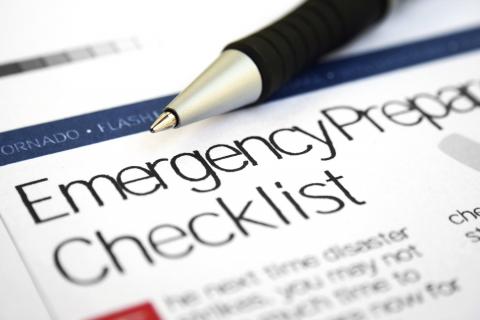
The dramatic pictures and video footage of natural disasters in the news are stark reminders of how fragile our world can be. Entire neighborhoods under water from massive floods. Towns torn apart by tornadoes. Hundreds of miles of coastline decimated by massive hurricanes. Earthquakes and landslides. Raging wildfires that leave thousands of acres of scorched earth in their wake.
No one can predict when Mother Nature’s fury will strike or how it will impact you, but every disaster shares a common theme – destruction and shattered lives.
If you and your family suddenly lost your home and everything you own to a natural disaster, how long would it take to get your lives back to normal? That depends largely on how well you’ve prepared. That means taking measures to reduce your risks, protect your home and property, and keep your family safe. But it’s about more than just surviving the storm – it’s about the ability to pick up the pieces and get on with your life.
Here are five tips that should be on every disaster preparedness to-do list:
- Know your vulnerabilities. Be aware of the natural disasters most likely to affect your area and how your home and property could be impacted, and take precautions against those threats. For example, create a clear zone around your home if you’re in a forest fire danger zone, or create barriers and drainage on your property to alleviate flooding.
- Take a thorough inventory. Yes, it’s time consuming to catalogue everything you own, but it’s next to impossible if your home washes away in a flood or goes up in flames. Keep a record of the inventory in a safe place. When it’s time to file an insurance claim or apply for federal disaster aid, you’ll be glad you made the effort.
- Have a disaster preparedness plan that covers things such as emergency communication, escape routes, and procedures for shutting off utilities. Run practice drills so everyone knows what to do. You should also create an emergency kit with basic supplies. See Ready.gov for a basic emergency kit. Don’t forget special needs for children, pets, or medical conditions.
- Protect crucial documents and data. In this digital age, there's no need to lose crucial financial documents in a disaster. Scan and upload them to the cloud with applications such as Dropbox or Google Drive. Consider storing valuable documents in a safe deposit box or other location away from your home.
- Be financially prepared. At minimum, review your insurance policies annually to make sure your property is sufficiently covered. Don’t make the potentially costly mistake of thinking your homeowners policy will cover you in case of a hurricane, tornado, earthquake, or flood. It may not. Make sure you have the supplemental coverage you need such as flood insurance. Also, what happens to your income and your family if you die, become physically incapacitated, or are too emotionally devastated to work for a period of time due to a major disaster? Life and disability insurance can provide the financial resources for you and your family to continue on after a disaster.
No matter where you live, you’re never completely immune from natural disasters, and with this year’s El Niño being one of the strongest on record, extreme weather events are becoming more commonplace. Take time to prepare, not just to survive a natural disaster, but to get your life back as quickly as possible after the dust has settled.
For more disaster preparedness advice, talk to the personal insurance professionals at Heffernan Insurance Brokers. Contact us today.
- Log in to post comments
